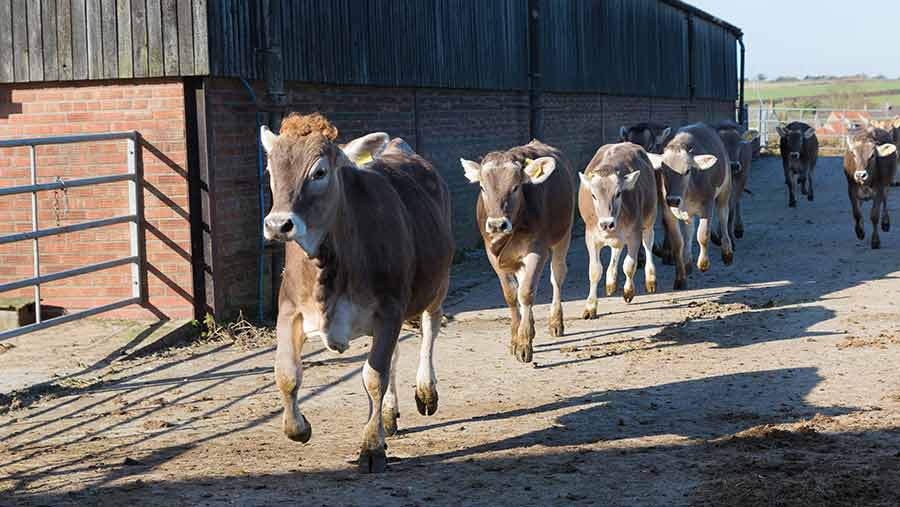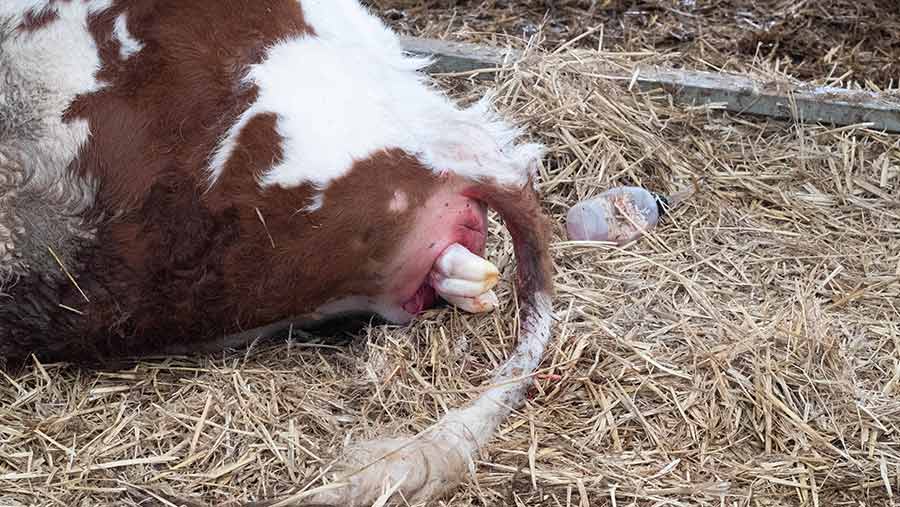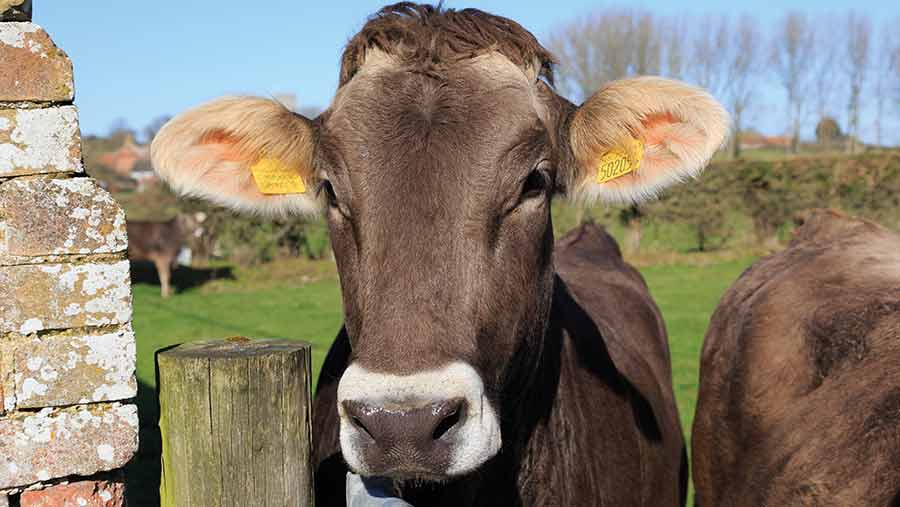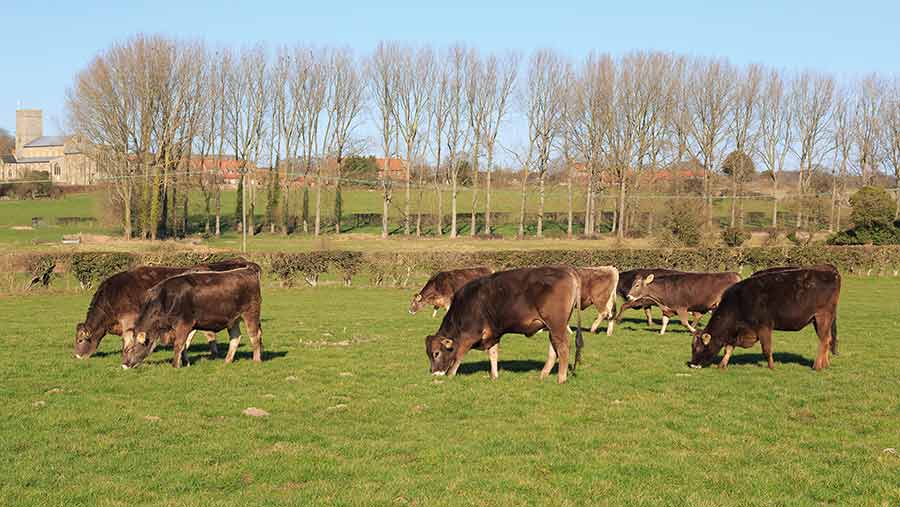How to help heifers join the milking herd and reduce stress
 © MAG/Judith Tooth
© MAG/Judith Tooth Training heifers to the parlour, keeping them with their peers, or managing them as a separate milking group can help reduce stress levels when replacements join the milking herd.
But there is no single “gold standard” that eases a heifer into herd life.
See also: How a dairy farmer improved herd performance through genetics
Dairy farmers need to look at how they can reduce stressors for heifers on their own farm as they approach calving, according to Dr Kathryn (Katy) Proudfoot, associate professor at Atlantic Veterinary College, University of Prince Edward Island, Canada.
She has spent the past 15 years studying and teaching animal behaviour and welfare and co-wrote a paper* about the behaviour of transition dairy cows, comparing first calvers with older, mature cows.
Understanding behavioural differences between heifers and cows can provide an insight into how they cope with the challenges and changes during transition, and throughout first lactation.
How to manage first-lactation heifers to mitigate stress in transition
- All cows must be provided with the chance to seek a secluded place to calve, especially for heifers to separate from other cows – for example, by moving to individual calving pens or providing space and visual separation if kept in a group
- Do not overstock pens, as this increases competition, which is particularly stressful to heifers
- Ideally, keep heifers in pens with their peers throughout their first transition period
- Alternatively, do not move heifers in with older cows immediately after calving
- Limit regrouping throughout transition and, if possible, keep cows in stable, all-in, all-out groups
- Where heifers must move into a new group, move them with at least one familiar partner
- Move heifers into low-stocked pens when regrouping throughout transition to reduce competition
- Training heifers to use a parlour before calving results in less kicking during udder preparation
Source: Dr Kathryn Proudfoot
Paying attention to animals’ behaviour will give clues to what may be the best management practice.
“This may ultimately help to create better environments for both animals and farmworkers,” Katy says.
“For example, it is important to give the group ample space to feed and lie down so that heifers do not need to fight for access to these resources.
Separating heifers into their own group is also a way to limit these social pressures.
In addition, if heifers seem especially hesitant to enter the milking facility, training is likely a good option,” she explains.

© Tim Scrivener
Transition experience
However, Katy advises against mixing heifers with cows for the first time immediately after calving.
“There are so many other stressors associated with the transition to lactation that it would make this time period especially stressful,” she says.
Instead, merging heifers and cows should be done well in advance of calving, or well after – for example, at least three weeks before or after.
Reviewing heifer behaviour studies at calving shows they are more likely to choose a natural place to give birth than cows.
The transition experience for first-calving heifers
- Seek more distance to calve
- Increased overall activity
- More postural changes during labour
- Unfamiliar environments (such as parlours) increase stress after calving
- Sensitive to human handling
- Lower feed intakes
- Increased standing/lying bouts
- More vulnerable to competition, particularly if regrouped alone
- Have a stronger motivation to separate from group mates at calving – possibly influenced by their social status
- In labour, raise their tails two hours earlier than cows, exhibit restless behaviour with more lying bouts and sometimes take longer to give birth
- Heifers more likely to be displaced at the feed barrier
- More signs of competitiveness a week before calving
- Still learning how to interpret and respond to aggressive social interactions from older animals
- Eat less before and after calving, and eat more slowly (could be learning how to consume transition feed) and visit more feed bins – older cows could have bigger appetites to meet larger bodyweights and high yields
- During the four days before calving, heifers lay down for less time, have more postural changes and take more steps compared with cows
Source: Dr Kathyrn Proudfoot

© MAG/Judith Tooth
The first time a heifer undergoes transition, she is still developing emotionally, physically and socially. Katy says this may lead to stronger responses than in mature cows.
“They also do not have previous calving experience, so do not know what to expect. Once they calve a second time, however, they may have a better idea.”
Heifers may also be more reactive because they had less human interaction before calving, with more choice and control over what they did with their time, she says.
Group rearing
Heifers coming into their first lactation could be more resilient if they have been reared with other calves.
Several studies have shown that early social housing (in pairs or groups) affects feeding and social behaviour of calves and heifers.
This may give them more social buffering to stress, says Katy, though she adds that research has not yet followed these calves through to first lactation.
“Social housing leads to an increase in a calf’s ability to cope with weaning and a reduction of their fear of new things [neophobia].
All these benefits, if they persist over time, may result in a more behaviourally resilient animal, better able to handle the stressors that come with transitioning into lactation: physical, management, social and feeding changes.
Keeping cohorts of young animals together during the transition period may help buffer some inevitable stressors.”
The earliest research Katy evaluated was from 1979, when milking heifers that were grouped separately from cows spent 10-15% more time eating compared with heifers mixed into the herd.
They also had a 20% higher dry matter intake and consequently gave 5-10% more milk.

© MAG/Judith Tooth
Management change
Yet running a first-lactation group is still not commonplace on dairy farms. Katy thinks a better understanding is needed of what will influence farmers to change their management.
This might be more evidence of the benefits, other motivators such as farmer-to-farmer learning, or benchmarking.
“As not all farmers are the same, there are likely several approaches that need to occur for farmers to change their practices,” she adds.
Katy also says research is needed to understand how to give heifers more control over their experience throughout transition.
Animals can be provided more “agency”, where they are trained using a reward.
This might mean feeding concentrates when a heifer voluntarily places her head in a headlock to be injected.
“Researchers need to develop a stronger understanding of social recognition [in cattle] and their perspective of calving and milking to find ways to help them prepare for the challenges they face, give them some control over their own experiences and provide them with social support.”
*A first time for everything: The influence of parity on the behaviour of transition dairy cows by Kathryn L Proudfoot and Juliana M Huzzey.
